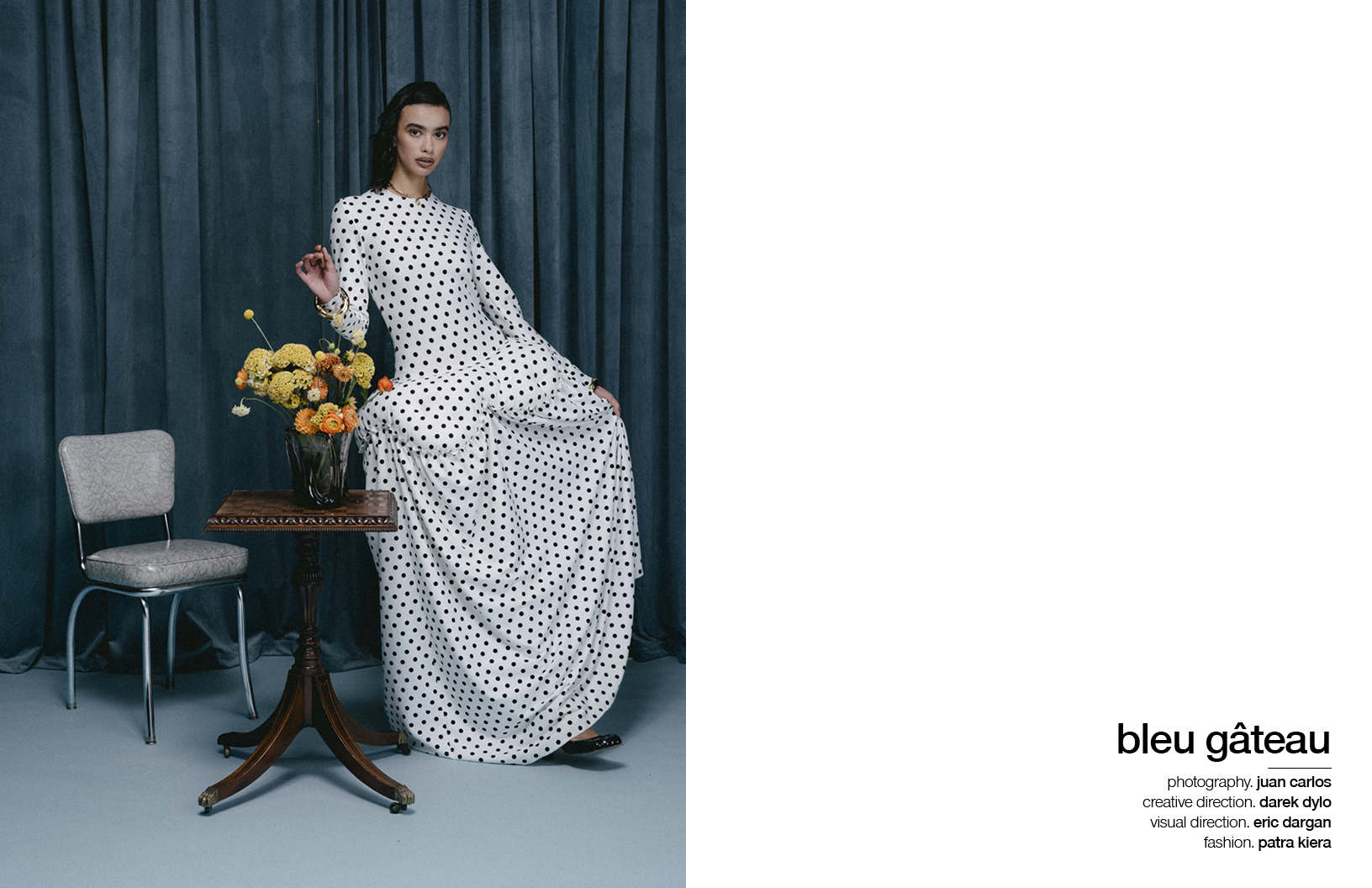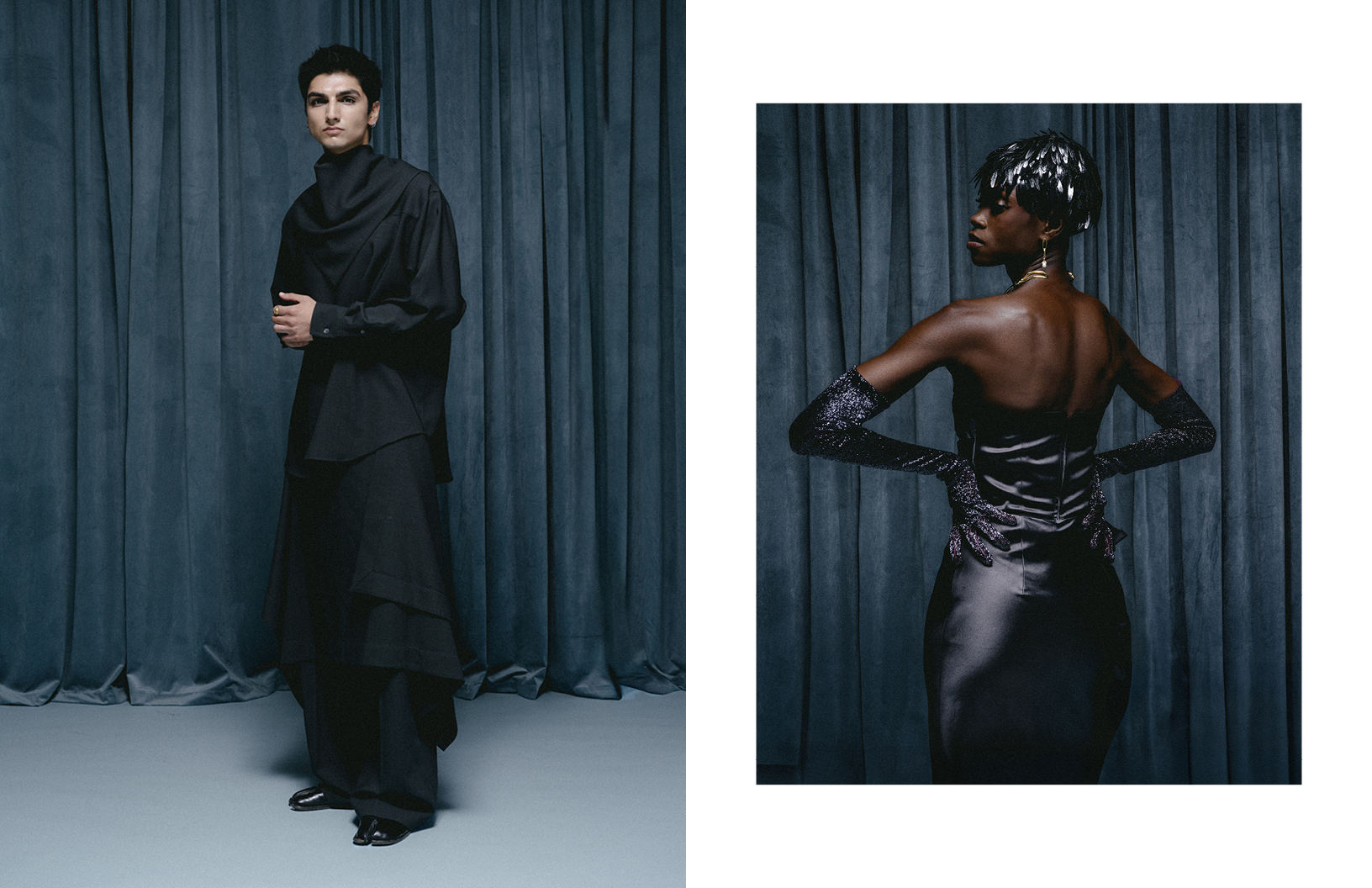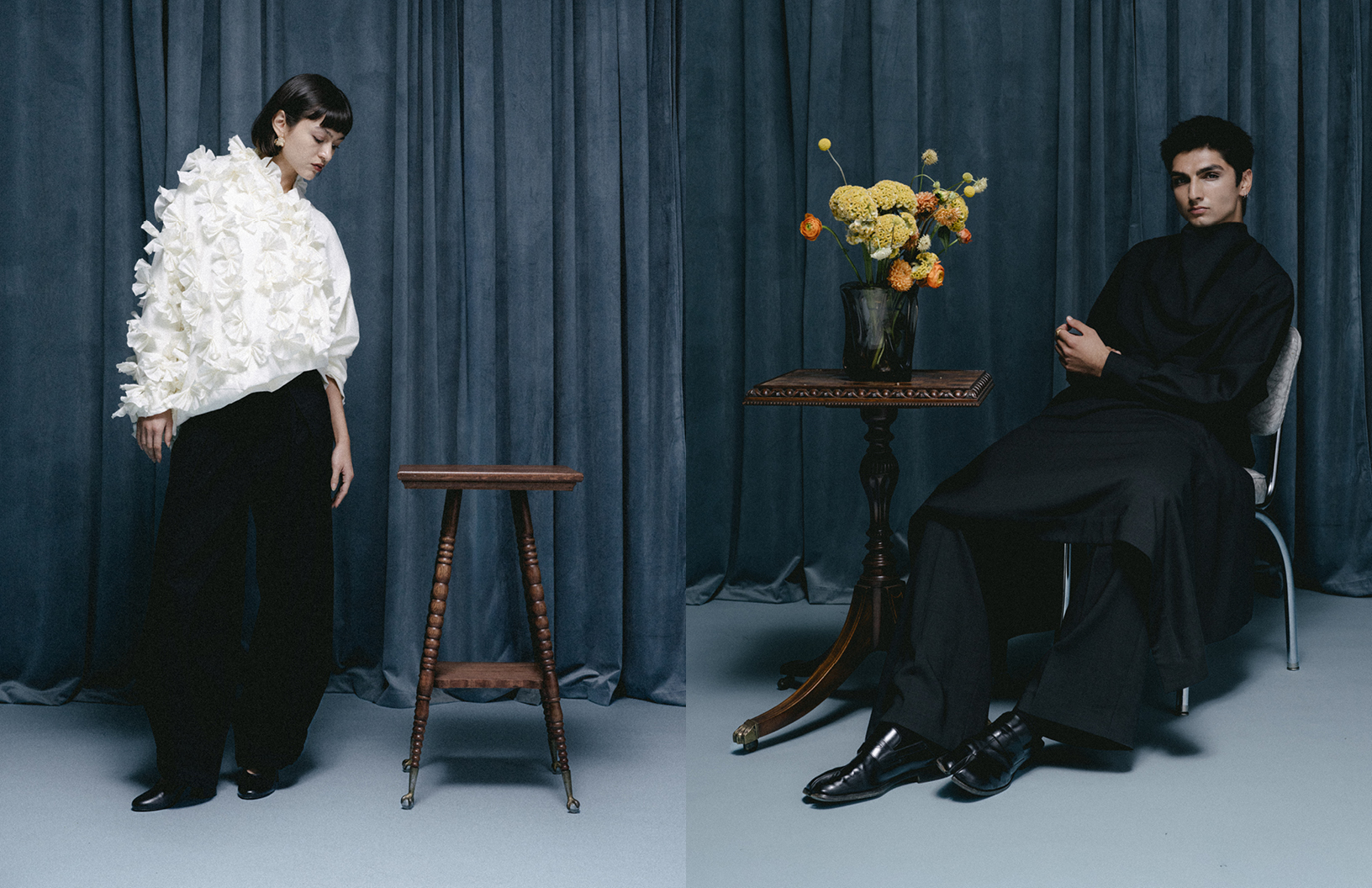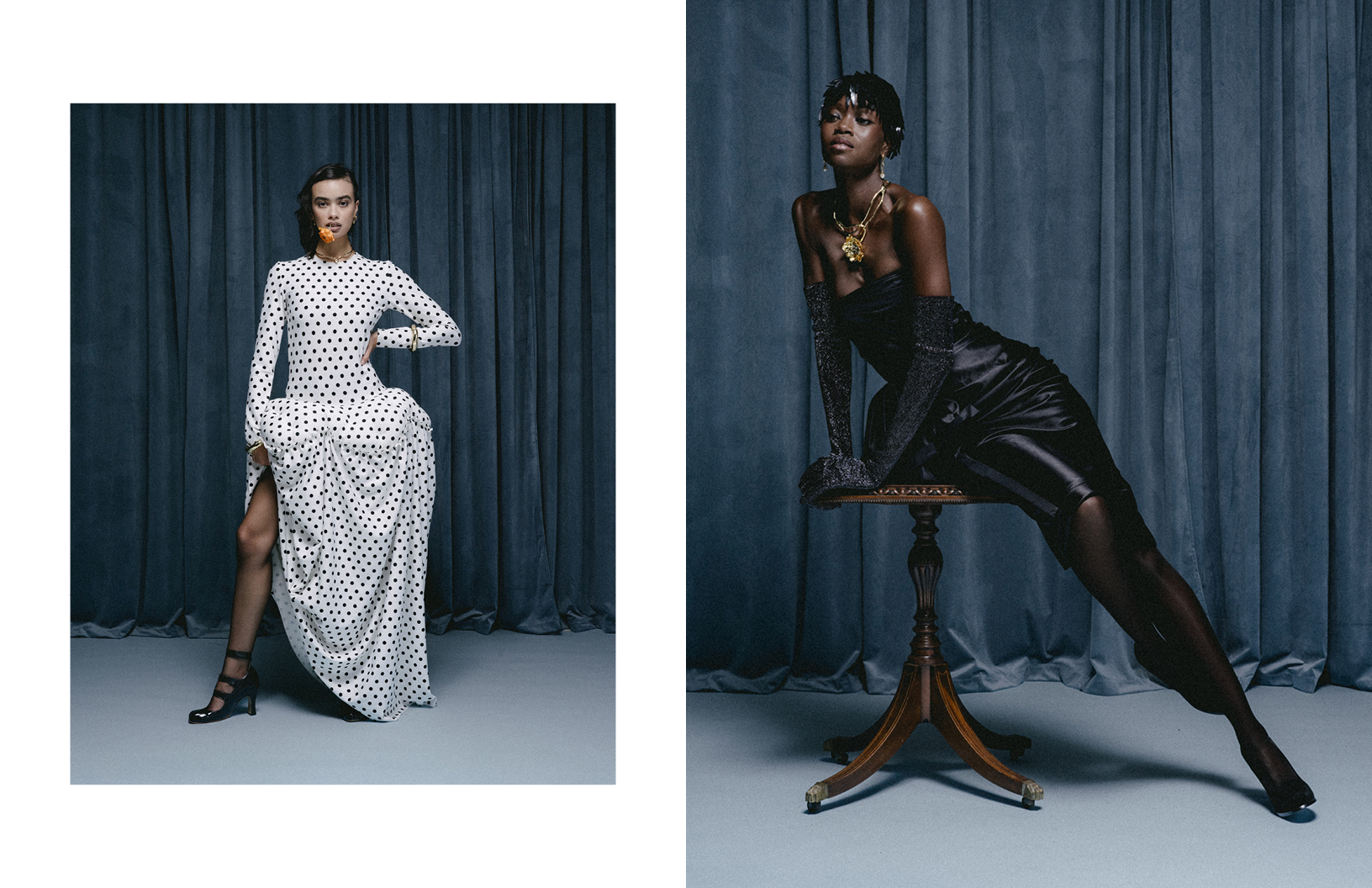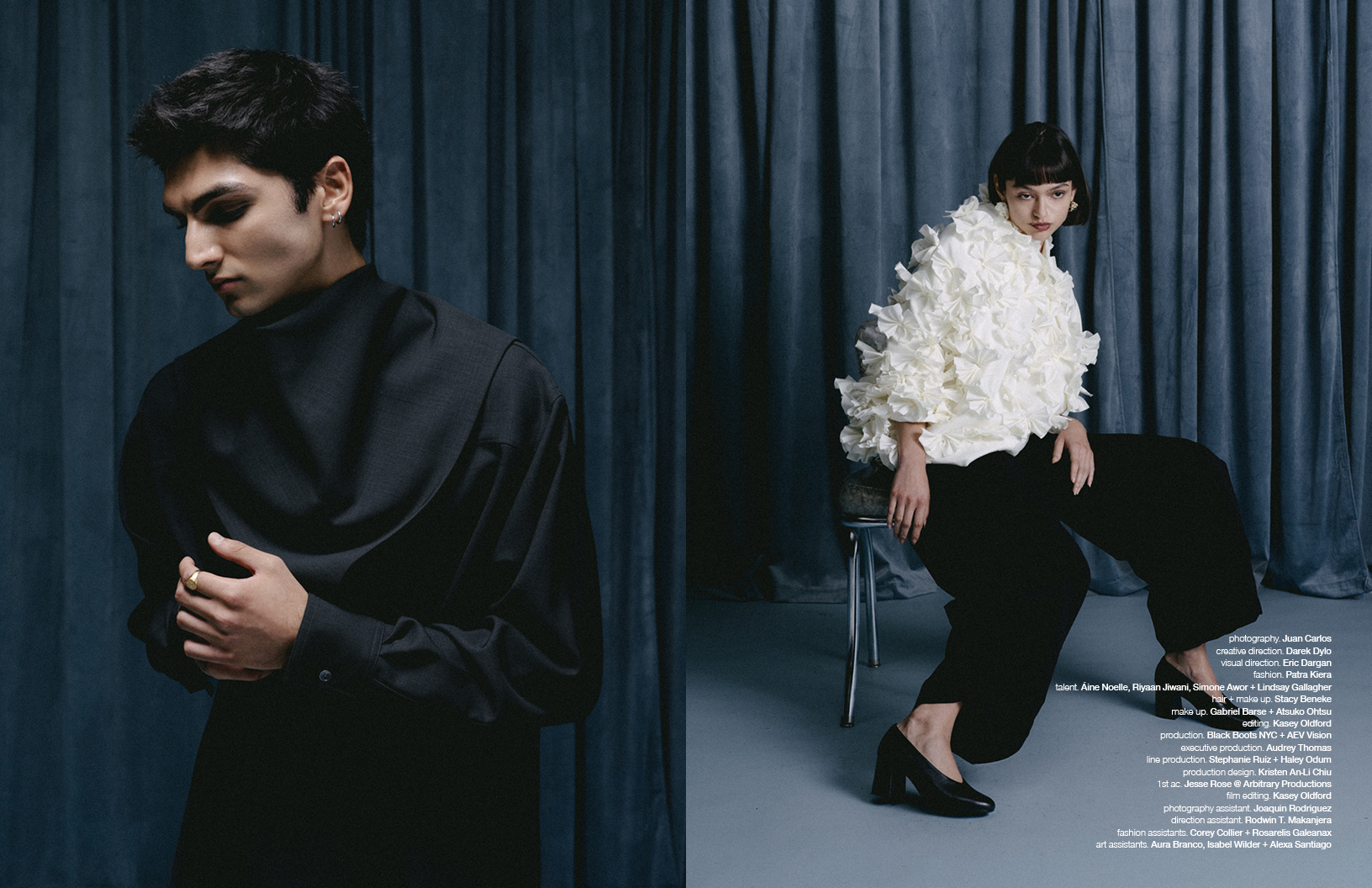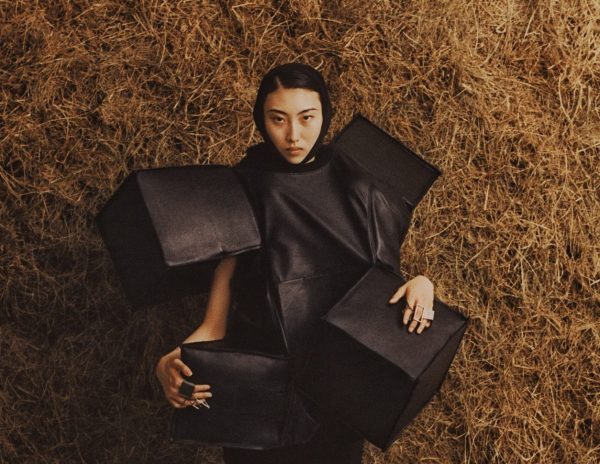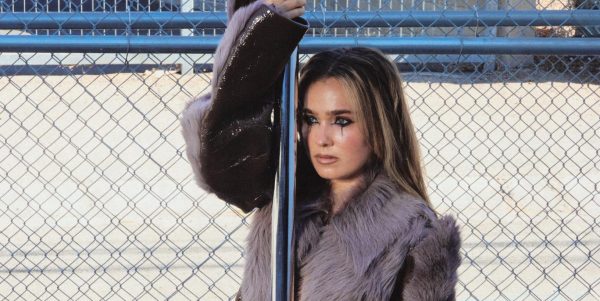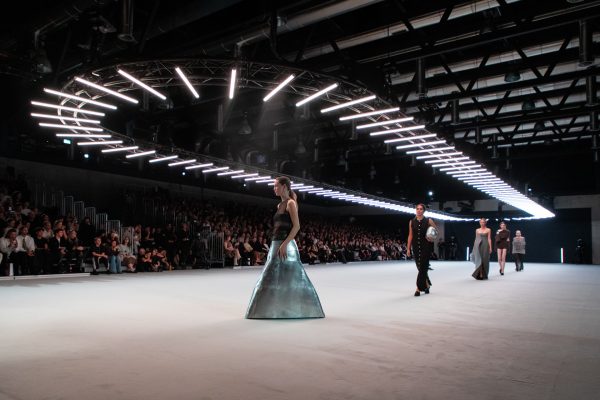
Stephen Wight as Lee in McQueen
Specular
Embarking into the world of late designer Alexander McQueen was always going to be an emotional experience. Most of us were not lucky enough to have met the man himself, though his theatrical productions and collections have inspired people around the world. Written by James Phillips and directed by John Caird, the stage production McQueen is a rare opportunity to gain an insight into a visionary who gave us everything we define beauty to be, but essentially we still know nothing about.
Recreating the emotion of McQueen’s posthumous retrospective, Savage Beauty at the Victoria & Albert Museum, the visual showcase sparks a combination of awe, sadness and beauty. Some question the ability of fashion to be a form of art, but McQueen’s power to captivate is undeniable. If fashion isn’t art, then how can it transcend the world of garments and become a historical retrospective or a West End production?
The start of the play brought a sense of discomfort. When we watch films we can indulge in uninhibited voyeurism, but when watching a theatrical production our subconscious is aware that people are performing in front of us. McQueen’s complicated world was difficult to digest.
Stephen Wight’s portrayal of McQueen was captivating, and he used great skill to recreate his mannerisms and body language. A memorable moment occurred when Dahlia (Carly Bawden) broke into McQueen’s house to steal a dress after carefully watching him like a bird in a tree. Birds are a frequent motif in the play, and this posed the question of whether we are the ones that are guilty of constantly peering into the private lives of our idols.

Stephen Wight as Lee (centre) in McQueen.
Specula
Christopher Marney contrasted harsh tropes of reality with beautifully macabre choreography. Mannequin-like dancers connected scenes as actors traversed the stage like a surrealist dreamscape. Although McQueen uses minimal set design, Lee’s creativity floods the stage. The subtle references to his work and collections allow us to catalyse our own visuals, referencing our own relationship to the designer’s history without parading it too obviously.
In the play, we join McQueen and travel through Lee’s London to find inspiration for what would become his final collection. Between each scene it feels like we are flying through time, only stopping for significant moments in McQueen’s life. We stop at Anderson & Sheppard, the Saville Row Tailors where McQueen served as an apprentice. Next, Soho is the venue for a beautifully juxtaposed dance sequence that touches on the class frustration for bohemian creatives. The show ends in Stratford, McQueen’s childhood home, where we get insight into his eternal love for his dying mother.

Tracy Ann Oberman as Isabella Blow and Stephen Wight as Lee in McQueen.
Specular
One of the most poignant scenes in the play is an intimate conversation with the late Isabella Blow, the influential Fashion Stylist who played a major role in McQueens success. Tracy-Ann Oberman interprets this role wonderfully. McQueen confronts her about her untimely death and discusses his guilt and feelings of abandonment. We simultaneously see him long for her creative support and ultimately their friendship. Political conversations surrounding his transition to Givenchy are touched upon, but instead of the dialogue leaving us with the residue of gossip, we are taught about the struggle every artist must endure as they are pulled from creativity into the more commercial side of any art form. How can McQueen repetitively produce and exceed his own ‘genius’ while dealing with the isolation that lurks in the shadows of success? For many artists, this struggle is constant and the darkness is ever present.
McQueen’s legacy sparks a dialogue about the labour of artistic creation, the creative block, and the pressure to deliver. The play is not only a triumph for the designer himself, but gives us deeper understanding of the torment and heaviness of the creative spirit.
McQueen runs from the 28 of August to 7 November 2015 at Theatre Royal Haymarket
Words / Ryan Lanji
Follow him here.
Discover the latest issue of Schön!.
Now available in print, as an ebook, online and on any mobile device.





























































